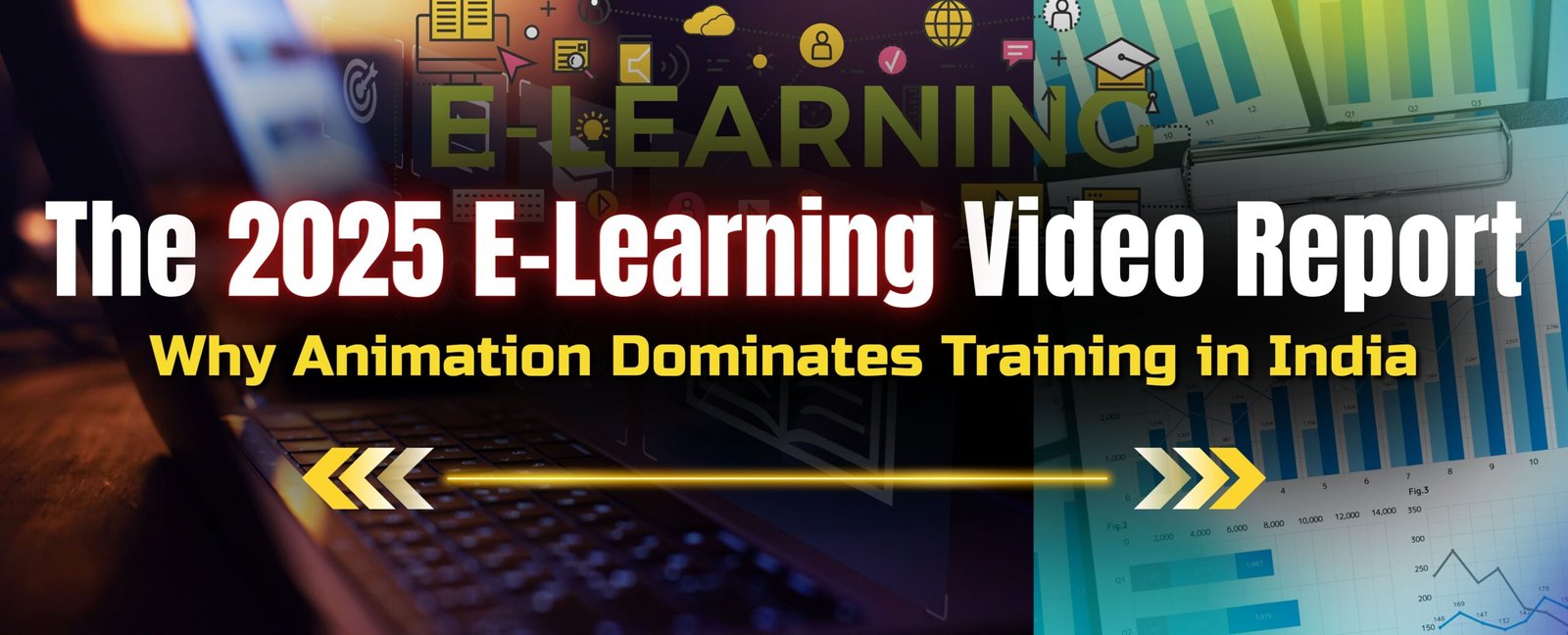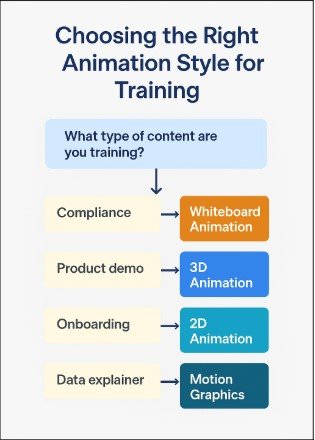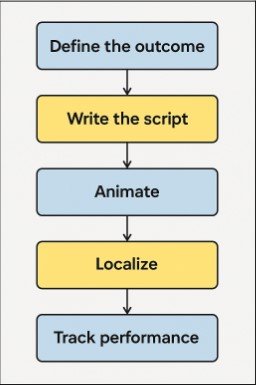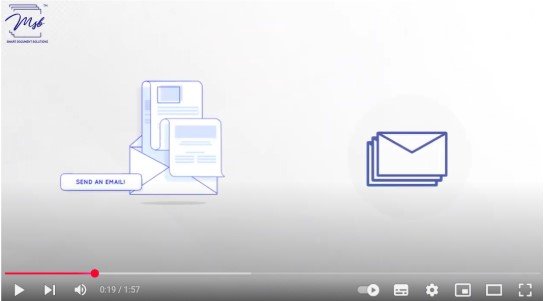Introduction: The Shift to Short, Effective Training
Modern workplaces have changed how we learn. Studies by Microsoft and Pew Research show the average adult attention span for online content is 8–12 seconds, and it peaks at around 60–90 seconds for focused video watching. Long e-learning videos, often filled with static slides, lose viewers quickly. Learners skip, disengage, or fail to complete modules, leading to low knowledge retention and wasted training budgets.

Microlearning videos provide a solution. By delivering information in short, focused bursts, they improve learner engagement and completion rates. Employees can finish a microlearning video during a coffee break, between meetings, or even on their phone during a commute.
When you combine microlearning with animated videos, the impact grows. Animation makes abstract or complex concepts easier to understand. Animated videos turn dry compliance rules, technical processes, or product details into memorable visual stories. Research published in Educational Technology Research and Development found that visualized instruction increases retention by up to 42% compared to text-heavy learning.
Microlearning videos paired with professional animation help companies train employees faster and more effectively, resulting in higher productivity and better performance.
Why 60 Seconds? The Science of Ultra-Short Learning
Why aim for exactly 60 seconds? Because research shows that’s the sweet spot for attention and memory. According to a 2023 LinkedIn Learning report, videos under 90 seconds had 83% completion rates, compared to just 20–30% for videos over 10 minutes. Another study in the Journal of Applied Psychology found short e-learning videos improved knowledge recall by 30% compared to long-format courses.
A single microlearning video lasting 60 seconds can present one idea or process step, helping employees focus without distractions. Short, animated videos also align with the way our brains process information, known as cognitive load theory, by reducing mental effort and preventing overload.
This microlearning approach doesn’t just improve engagement. It supports spaced repetition, a learning technique where learners revisit short lessons over time to strengthen memory. Frequent, bite-sized animated videos can reinforce skills and knowledge more effectively than one long course.
E-learning videos designed as 60-second microlearning modules ensure learners stay engaged, retain more information, and complete training programs faster, saving time and costs for organizations.
Benefits of 60-Second Animated Microlearning Videos
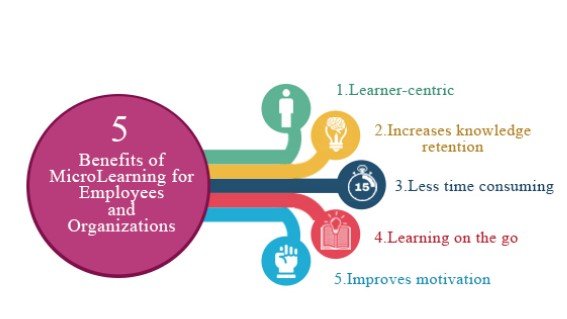
Faster time-to-competence for new hires.
Short, animated e-learning videos help new employees grasp essential information quickly. Instead of spending hours reading manuals or attending long webinars, they can watch focused microlearning videos on key tasks. This speeds up onboarding, getting them productive faster.
Better retention and understanding of single concepts.
Covering one concept per video reduces cognitive overload. Learners focus on just what they need to know, which improves memory and understanding. Studies show microlearning can improve long-term retention by up to 50% compared to traditional training.
Easier to fit into daily routines—mobile-friendly learning.
Employees can watch 60-second microlearning videos on their phones, during short breaks, or while commuting. This flexibility increases the chances they will complete training and engage with e-learning videos.
Consistent messaging across global teams.
Animated videos ensure every employee, no matter where they work, receives the same clear, accurate information. This consistency reduces errors and misunderstandings, which is especially valuable for multinational organizations.
What Makes a Great 60-Second E-Learning Video?

One Learning Objective
Each microlearning video should teach a single, focused concept. For example, instead of covering an entire software platform, create separate videos for login, dashboard overview, and basic functions.
Strong Script
Start with a concise, conversational script. Avoid jargon and overly complex sentences. Write as if you’re speaking directly to the learner—this makes information easier to absorb.
Visual Clarity
Use clean, modern animations. Highlight important points with visual cues. Keep backgrounds simple so learners aren’t distracted. Animated videos should guide attention, not overwhelm it.
Interactive Elements
Embed a quick question or a clickable element at the end of the video. Even a simple “Yes/No” check can boost engagement and reinforce learning immediately.
Accessible Design
Add captions for learners who need or prefer to read. Use clear audio with diverse voice talent to reflect your workforce. Choose inclusive, diverse characters in your animations so all employees see themselves represented.
Production Tips: How to Plan and Execute
A successful 60-second microlearning video starts with a solid plan. Begin by working with an experienced animation video production company that understands both e-learning videos and the unique needs of microlearning. They can guide you through each step efficiently, saving time and avoiding costly mistakes.
Always start by writing a concise script focused on one objective. Next, create a storyboard to map out visuals and ensure the animation flow supports your script. A storyboard helps align everyone involved—subject matter experts, designers, and animators—before production begins.
Don’t underestimate sound quality. Even a perfectly animated video can fall flat with poor audio. Invest in professional voice-overs that are clear, engaging, and aligned with your brand tone. Also, include subtle sound effects to keep the learner’s attention, but avoid anything distracting.
Finally, maintain consistent branding. Colors, fonts, logos, and visual styles should match your organization’s guidelines. This makes your animated videos look professional and reinforces your brand identity every time an employee watches them.
How to Distribute 60-Second Microlearning Videos
Once you’ve created your microlearning videos, make sure they’re easy for employees to access. The most effective distribution starts with your learning management system (LMS). Embed the videos directly into relevant training modules so you can track completion and learner progress.
Share videos via company communication tools like Microsoft Teams, Slack, or your corporate intranet. This makes learning part of everyday workflows and increases engagement. Consider sending microlearning videos as part of drip email campaigns—short, spaced-out messages that deliver training over time.
If your organization uses microlearning-specific platforms like Axonify or EdApp, integrate your animated videos there. These platforms offer features like adaptive learning paths, gamification, and detailed analytics to maximize the impact of your e-learning videos.
Measuring Success: Key Metrics to Track
To understand the real impact of your microlearning videos, track key performance indicators (KPIs) aligned with your goals. Start with completion rates aimed for over 90% on short modules, which shows employees are watching videos to the end.
Monitor retention scores by comparing quiz results before and after you introduce animated videos. Higher scores indicate better understanding and knowledge transfer.
Measure engagement by analyzing average watch times and drop-off points. If employees stop watching before the 60-second mark, consider adjusting the pacing or visuals.
Collect employee feedback with short surveys. Ask whether videos were clear, engaging, and relevant. This input helps you improve future animated videos and tailor training to employee needs.
Conclusion: Turning Insights into Action
Short, animated microlearning videos aren’t a passing trend—they’re a proven approach to increase training efficiency, retention, and learner engagement. By aligning training content with modern attention spans and creating focused, visually engaging videos, you help employees learn faster and retain more.
L&D teams don’t have to overhaul entire programs overnight. Start with a single animated microlearning module, measure results, and build on what works. Small pilots can demonstrate big value quickly.

Partnering with a professional animation video production company makes creating polished, impactful microlearning videos easier and faster. Investing in high-quality animated content ensures employees get the training they need to succeed while saving time and resources for your organization.
FAQs
1. Why are 60-second microlearning videos more effective than longer e-learning videos?
Short videos keep attention focused on one concept, which helps reduce cognitive overload. Studies show completion rates for videos under 90 seconds are above 80%, compared to under 40% for videos over 10 minutes.
2. What topics are best suited for 60-second animated microlearning videos?
Topics that can be broken into clear, single objectives work best, like safety procedures, software features, compliance steps, or quick process overviews.
3. How can I make sure employees watch microlearning videos?
Distribute videos through the LMS and tools employees already use, like Teams or Slack. Use analytics to track engagement, and keep videos visually engaging to hold their interest.
4. What makes animated videos better than static slides for microlearning?
Animated videos illustrate processes and abstract ideas more clearly. They use motion, characters, and storytelling to boost understanding and retention, making training faster and more memorable.

By day I create engaging content along with infusing high-volume, low-competition keywords strategically so that it gets loved by you and Google Crawler. Off the clock? I scroll for fresh ideas. (Don’t judge, gotta fuel the creativity!)


